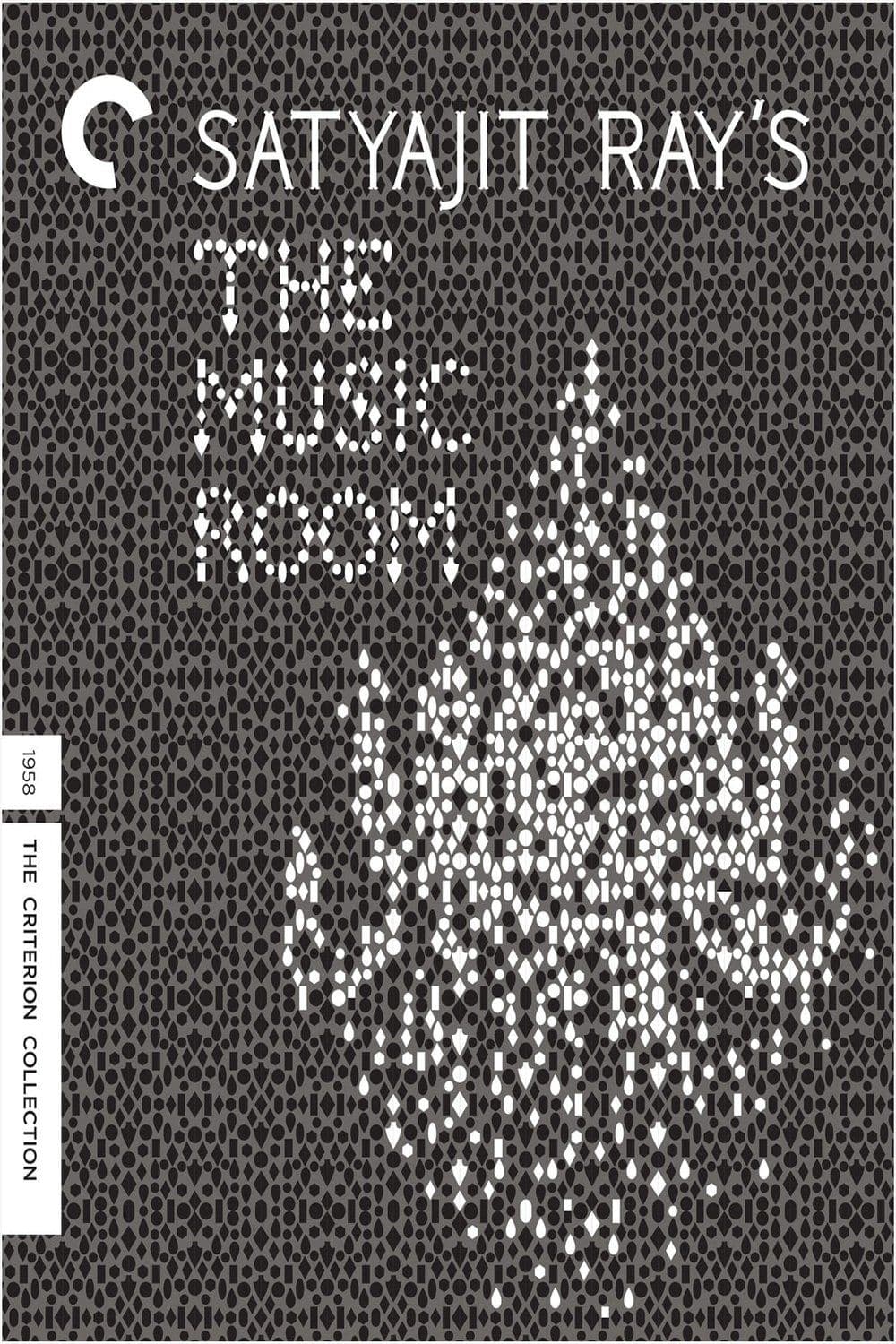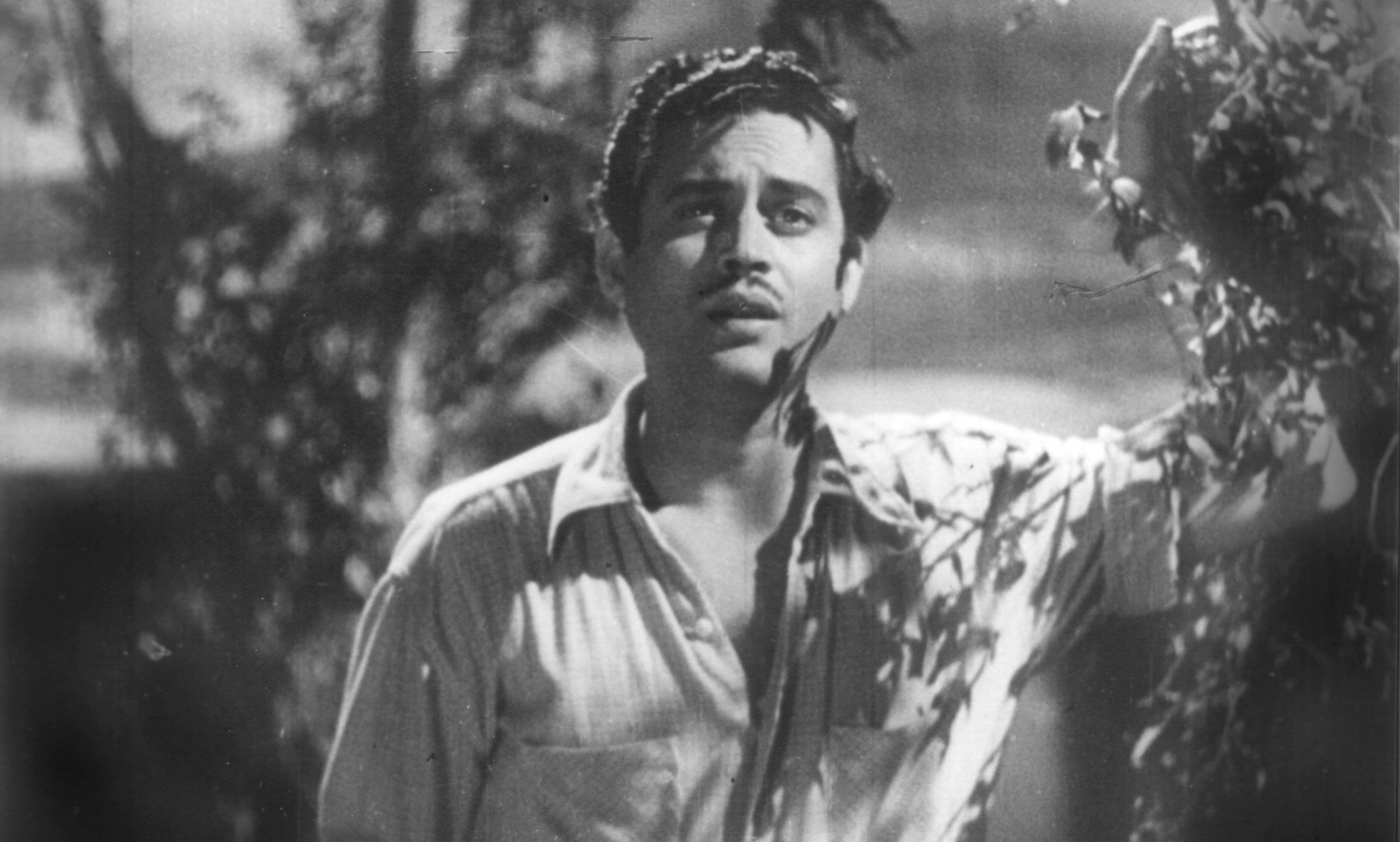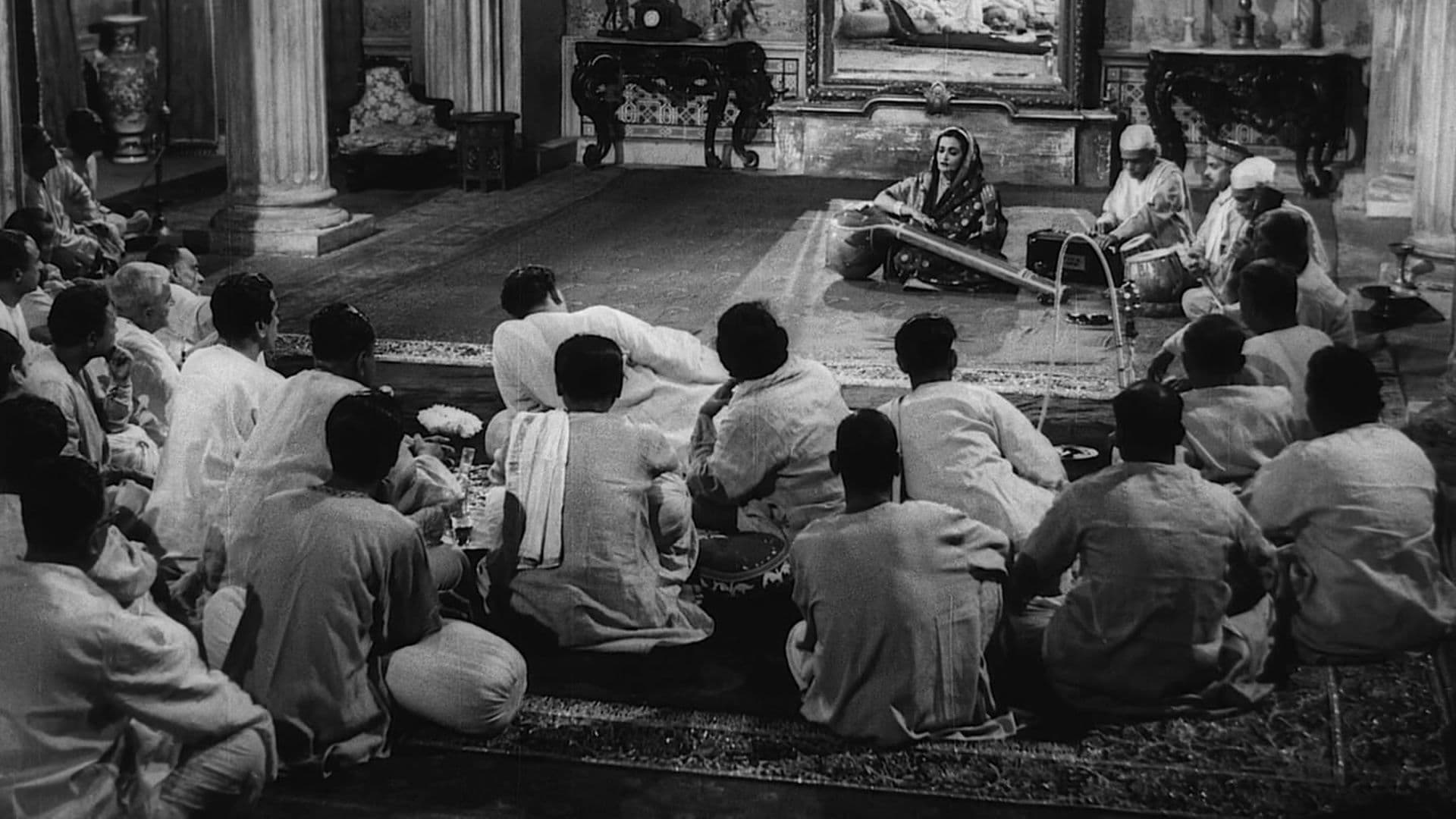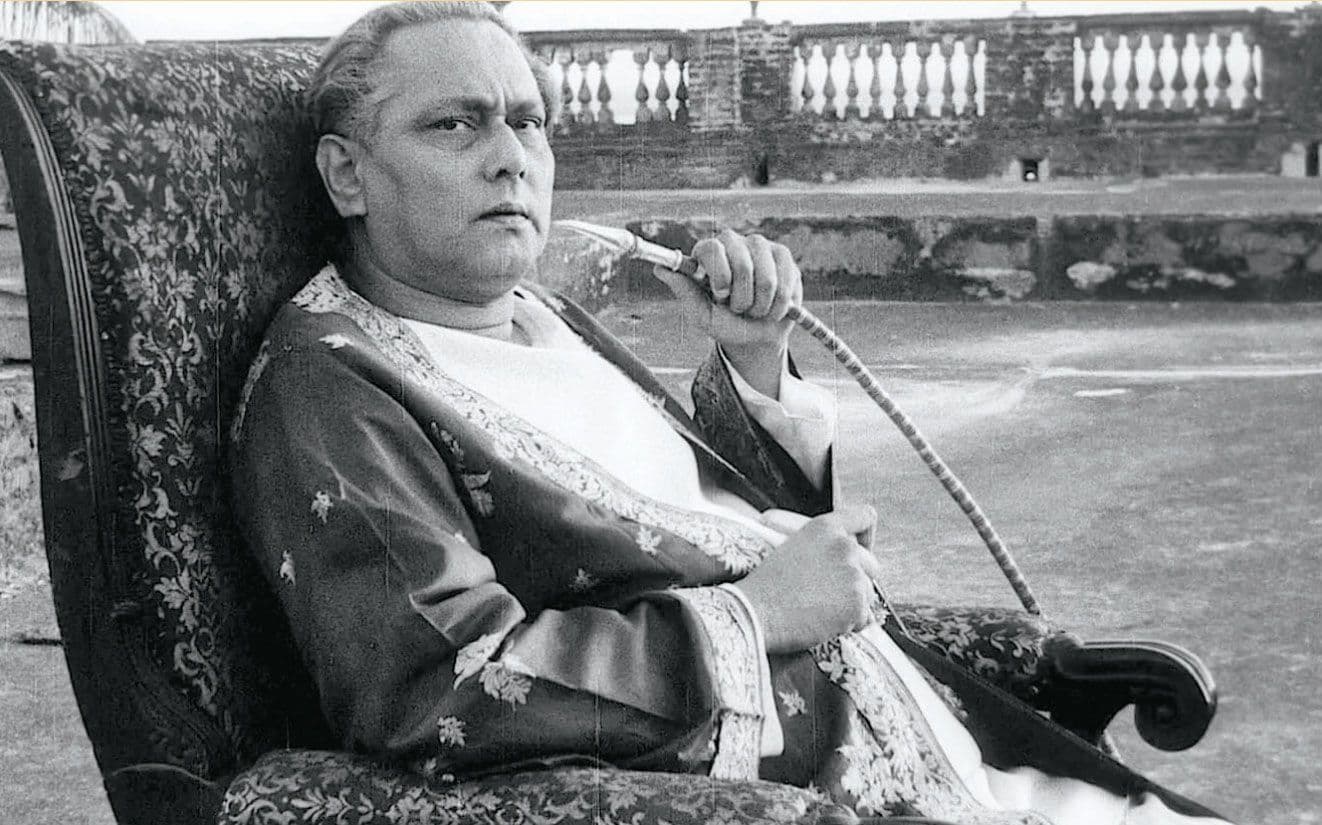
The Music Room
1958
Rate this movie
Average: 0.00 / 5
(0 votes)
Director
A grand, passionate portrait of a man lost in his own passion for music. A lucid study of how deeply art can permeate a soul and induce it to take leave of reality, to lose itself in its ornate recesses. But "The Music Room" is not merely a chronicle of self-indulgence; it is a poignant elegy for a dying aristocracy, desperately clinging to a refined culture amidst the relentless advance of modernity. Biswambhar Roy embodies a living paradox: a patron whose artistic virtues transform into his very ruin. Satyajit Ray masterfully explores the intoxicating, yet ultimately destructive, power of aesthetic obsession. In Roy, we see not only an esthete from another era, but the symbol of a disintegrating age, a world of ancient glories and rigid social codes inexorably dissolving in the face of bourgeois pragmatism. Music, in this context, is both refuge and condemnation, a parallel universe where Roy seeks a transcendence that reality denies him, but which at the same time alienates him from it irreversibly.
Biswambhar Roy, an esteemed local landlord and the last bulwark of a landed aristocracy, the zamindars, whose power and prestige are slipping away in the maelstrom of agrarian reforms and the rise of a new mercantile bourgeoisie, loves music to such an extent that he dedicated a large hall of his mansion to organizing concerts and inviting notables and friends. His abode, once a focal point of life and culture, becomes a decadent sanctuary, its lavish halls silent witnesses to an ephemeral opulence. Roy, noble in lineage and spirit, refuses to adapt to changing times, despising the vulgarity of the nouveau riche, Mahim Ganguly, whose money, obtained through speculation and practicality, represents everything Roy abhors. The conflict is not merely economic, but philosophical: honor versus utility, art versus commerce.
But his fortune is sadly in decline, and despite the warnings of his parsimonious wife — whose pragmatic wisdom is ignored with aristocratic nonchalance, like an unheeded Cassandra whose presage of ruin is destined to come true — the man persists in his activity of organizing concerts. Roy's obsession with these events, no longer mere diversion, transforms into an act of defiance, a desperate affirmation of his identity in a world that no longer recognizes him. His inexorable financial decline is not a mere inconvenience, but the dramatic consequence of a radical existential choice: to prefer the ephemeral glory of a perfect raga to the harsh reality of red balance sheets. He will inevitably be ruined and decide to organize one last grand concert before disappearing into nothingness. This final "grand concert" is not a capitulation, but a last, majestic act of resistance, a cultural suicide masked as celebration, a deflagration of beauty destined to leave behind only ash and silence.
Ray, a sensitive and talented man of cinema, proves once again to be a director of undisputed artistic stature, creating a touching and profound work. With his unmistakable sensibility, which earned him comparisons to masters of Italian neorealism such as Vittorio De Sica and Jean Renoir, of whom he was a devout admirer and assistant, Ray imbues "The Music Room" with the same profound humanity that permeates the celebrated Apu Trilogy. But here, instead of the ascent of an individual in his confrontation with life's challenges, we witness the twilight of an entire social class. Ray confirms himself as a keen and compassionate chronicler of the mutations in post-independence Indian society, capable of portraying with equal empathy both the misery of peasants and the decadence of an aristocracy consuming itself in its own grandeur. His direction, never intrusive, becomes almost ethereal, a transparent veil through which the observer penetrates into the most intimate folds of the human soul. What Ray offers us is not a moral judgment, but a keen observation of the complexity of choices and their ensuing consequences. The work stands as a monument to the persistence of beauty in an ephemeral world, a testament to the cathartic power of art in the face of the brutality of reality.
The concert scenes are wonderful, refined long takes that admirably intertwine with the notes soberly taking center stage, creating a marvelous sensation of peace, a synesthesia of music and images attuned to the narration. It is precisely these sequences that constitute the pulsating heart of the film, a pinnacle of cinematic mastery and aesthetic intelligence. The long takes, true visual ballets, move with hypnotic fluidity through the hall, capturing the ecstasy of the musicians and the ecstatic admiration of the audience. The camera of Subrata Mitra, Ray's fetish cinematographer, lingers on faces marked by emotion, on the skilled gestures of hands dancing over instruments, on the subtle folds of costume fabric, creating an almost tactile atmosphere. Every note, every vibration of the sitar strings, every echo of the percussion, is not a simple accompaniment, but a narrative element in itself, an incessant dialogue between sound and image. Ray, himself a musician and composer, meticulously curates every aspect of the soundtrack, integrating authentic performances by some of the greatest masters of Indian classical music, such as Roshan Kumari for Kathak dance and Ustad Vilayat Khan for the sitar. This confers unparalleled veracity and intensity upon the scenes. The light, often subdued, almost crepuscular within the dwelling, contrasts with the rare shafts of sunlight filtering from outside, emphasizing the gilded cage in which Roy has self-imprisoned himself. The cobwebs slowly enveloping the crystal chandeliers, the dusty mirrors, the portraits seemingly observing the decline of the household with mute disapproval: every detail is a brushstroke painting the tableau of decadence. And then there is the elephant, a symbol of prestige and power, but also of an increasingly heavy burden, almost an alter ego of Roy, majestic but destined for a slow and ineluctable end. The synesthesia of music and images reaches its zenith here, transfiguring decadence into a kind of sublime melancholy, where material loss is sublimated by the immortality of art. It is not merely visual or auditory beauty, but an emotional resonance that lingers long after viewing, leaving the spectator in a state of profound contemplation.
"The Music Room" is not merely a film about music, nor solely a film about social decline; it is a profound commentary on the nature of obsession, on the difficult coexistence between aesthetics and reality, and on the dignity, at times tragic, with which one can face the end of an era. Ray offers us not a hero to celebrate nor an anti-hero to condemn, but a man, magnificently complex and imperfect, whose existential parabola resonates with universal resonance. It is a work that invites reflection on the fragility of beauty and the tenacity of passion, a timeless masterpiece that continues to enchant and move with its subtle poetry and its unsettling topicality.
Country
Gallery




Featured Videos
Official Trailer
Comments
Loading comments...